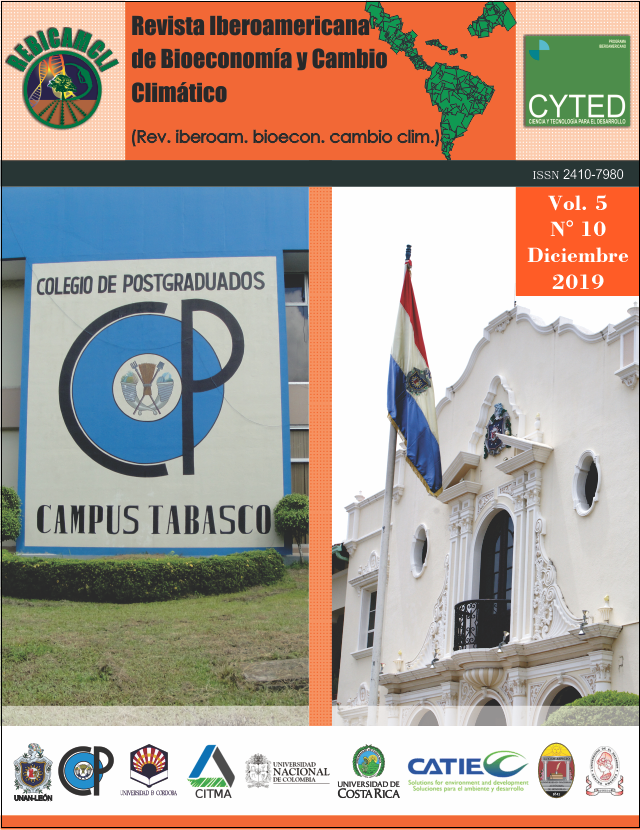Asociación de frutales de limón persa (Citrus latifolia) y palma de coco (Cocos nucifera L.) con el aporte de materia seca por cultivos anuales
DOI:
https://doi.org/10.5377/ribcc.v5i10.8968Palabras clave:
Intercalados, Frutales, Materia orgánicaResumen
La asociación de limón persa y cocotero con cultivos anuales contribuye a la mejora de las características de los suelos principalmente en el contenido de materia orgánica al incorporar los residuos de cosecha con un manejo integral. El objetivo es implementar un sistema de cultivos de maíz y frijol intercalados con frutales de limón persa y palma de coco. El trabajo se estableció en octubre de 2017, en el Hatillo, municipio de la Antigua, Veracruz, con árboles de frutales de limón persa y palma de coco, en cepas con la adición de abonos orgánicos. Antes del establecimiento se abonó con 18 t.ha-1 de materia seca de la caña de azúcar y posteriormente se establecieron los cultivos de frijol Michigan, negro Veracruz y maíz H-520, estos cultivos fueron manejados en diferentes fechas de siembra durante el periodo 2018 y 2019. Se midieron en los frutales, altura de planta, diámetro de tallo, número de hojas y ramas, aporte de materia seca al suelo y se realizaron análisis de suelo en árboles de limón persa, palma de coco y cultivos anuales. Los resultados para limón persa presentan diferencias significativas a los 386 días, con respecto al diámetro de tallo, altura de planta, número de ramas. Con respecto a la palma de coco, el diámetro de tallo presentó diferencias significativas a partir de los 190 días, en la altura de la palma los valores fueron diferentes a los 386 días. En el aporte de materia seca el frijol negro Veracruz, aportó mayor cantidad al suelo con 8,426 t/ha; el maíz híbrido H-520 aportó mayor cantidad de materia seca en la fecha del 23 de febrero del 2018 con 11,333 t/ha. Al analizar la materia orgánica del suelo, se encontró mayor porcentaje en el sistema cultivos intercalados, superando al monocultivo de caña de azúcar. La asociación de especies permite mejorar las condiciones agroecológicas en el manejo de los cultivos.
Descargas
Descargas
Publicado
Cómo citar
Número
Sección
Licencia
Copyright © 2023 Rev. iberoam. bioecon. cambio clim. Universidad Nacional Autónoma de Nicaragua León Colegio Postgraduados y UNAN-León, Escuela de ciencias agrarias y veterinarias/ Departamento de Agroecología/Centro de Investigación en Bioeconomía y Cambio climatico (CIByCC).







